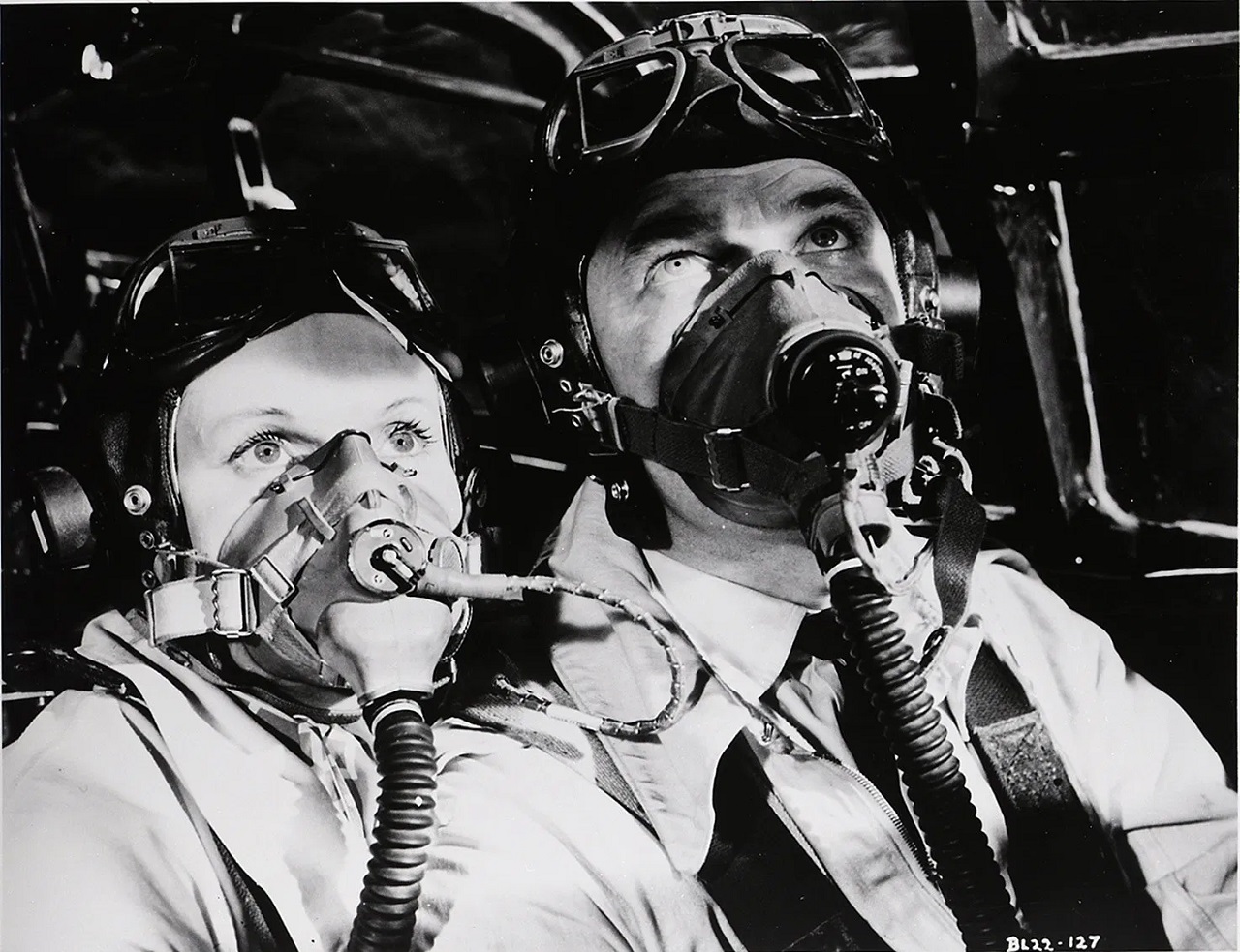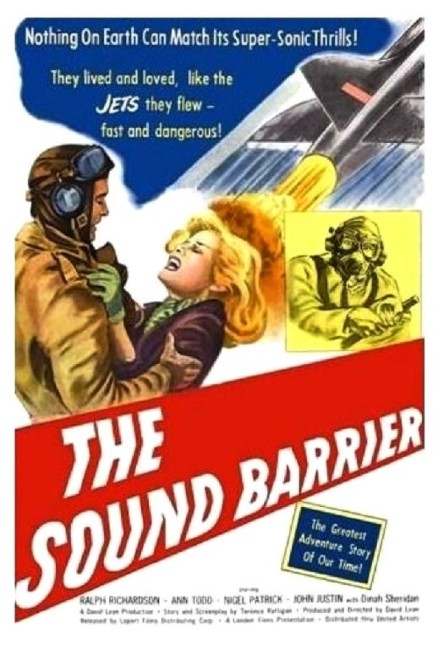aka Breaking the Sound Barrier
Crew
Director/Producer – David Lean, Screenplay – Terence Rattigan, Photography (b&w) – Jack Hildyard, Aerial Unit Director – Anthony Squire, Aerial Unit Photography – Jo Jago, Peter Newbrook & John Wilcox, Music – Malcolm Arnold, Music Conductor – Muir Matheson, Makeup – George Partleton, Set Design – Vincent Korda. Production Company – British Lion.
Cast
Ralph Richardson (J.R. Ridgefield), Ann Todd (Sue Ridgefield Garthwaite), Nigel Patrick (Tony Garthwaite), John Justin (Philip Peel), Joseph Tomelty (Will Scott), Denholm Elliott (Christopher Ridgefield), Dinah Sheridan (Jess Peel)
Plot
RAF officer Tony Garthwaite marries Sue Ridgefield, the daughter of airplane manufacturer J.R. Ridgefield. After the end of the War, Tony accepts a job as Ridgefield’s top test pilot. Ridgefield is determined to build the first jet to break the sound barrier. As Tony volunteers for the exceedingly dangerous mission of flying the plane intended to do so, Sue becomes afraid of her father’s disregard of human life in his single-minded determination to achieve his goal.
The Sound Barrier is an interesting case where one is not sure whether to list it as a science-fiction film or not. It concerns a scientific breakthrough – the idea of a plane travelling faster than the speed of sound, breaking the titular ‘sound barrier’ – yet at the time it was made it was not a science-fiction film – the sound barrier had been broken five years earlier in October, 1947 by Chuck Yeager. Certainly, Yeager’s exploit was covered up by US Department of Defense secrecy for some time but it was publicly known at the time The Sound Barrier was made and Yeager was even used as part of the publicity during the film’s American premiere.
Despite this, The Sound Barrier proceeds as though Chuck Yeager’s breakthrough had not occurred and as though it is telling the story of how the sound barrier was or would be broken. Tom Wolfe’s book The Right Stuff (1979) tells how the film in fact altered public perception about how the sound barrier was broken. There Wolfe amusingly recounts how Yeager became fed up with the belief that the film was a dramatisation of the real events and that the British rather than he had been the ones who first broke the sound barrier, and secondly with the notion that the secret of breaking through the sound barrier was reversing the controls at the last moment – something that in actuality would have destroyed the plane.
The Sound Barrier is a film that is struck with awe at the scientific possibilities offered by the Jet Age. For instance, the models of the planes used in the film are listed right after the names of the actors. There is a long sequence inserted solely to show the sheer amazement of flying from England to Cairo in five hours rather than five days. This was also the first film to use aerial footage of actual jets.

It is interesting to compare The Sound Barrier to Philip Kaufman’s film of The Right Stuff (1983). Both are concerned with the breaking of the sound barrier. The Right Stuff is enamoured with the sheer ballsy heroism of the men, their ability to stand above normal fear – their having ‘the right stuff’. On the other hand, The Sound Barrier regards such a breakthrough as being an enormously risky but that the men are simply ordinary pilots doing their duty. The Right Stuff concerns itself with the human challenge to achieve extraordinary feats; in contrast, The Sound Barrier concerns itself with the question of whether sending men into almost certainly fatal situations is a fair cost of progress. It would have been interesting to see The Right Stuff written from this perspective – of the moral doubts the engineers and controllers must have had in not being certain that the pilots would survive in the planes and rockets they designed.
In fact, this focus makes The Sound Barrier into a Frankenstein film of sorts and paints the ambition of Ralph Richardson’s industrialist as monstrous for so demandingly pushing the people that work for him. Ultimately of course, the sound barrier is broken and the human cost is seen as having been worth it. The film goes out on an end speech, reminiscent of the end of Things to Come (1936), with Ralph Richardson and daughter Ann Todd looking up at the stars and he commenting “The universe is so unconscious of our presence,” with the implication being that now that they have the courage, vision and engineering know-how, the universe is the next barrier.
Ralph Richardson plays with a determined ruthlessness. It is a bullish performance that dominates the entire film and one that had Richardson receiving a number for awards for the part – the BAFTAs, the National Board of Review, the New York Film Critics Circle Award. The film itself was nominated for the Best Screenplay Oscar and won the BAFTA for Best Picture and the National Board of Review Award for Best Foreign Picture.
The Sound Barrier was one of the films of the celebrated British director David Lean who went onto make the likes of The Bridge on the River Kwai (1957), Lawrence of Arabia (1962) and Dr Zhivago (1965), among others. David Lean only ever made one other genre film, the Noel Coward ghost comedy Blithe Spirit (1945).

